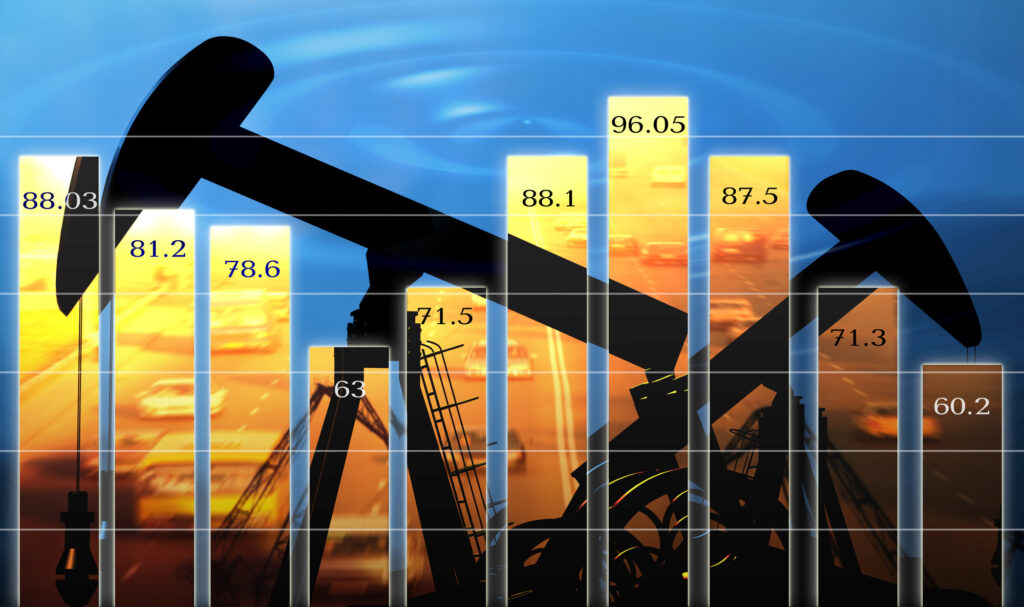
In the world of finance and commodities trading, the terms “bull” and “bear” are frequently used to describe market sentiment. A bull market refers to a period of optimism and rising prices, while a bear market signifies pessimism and declining prices. Oil, being one of the most crucial and widely traded commodities globally, is not immune to these polarized dynamics. This article explores the intricate interplay between bull and bear markets in the context of oil trading, delving deep into the factors that drive these sentiments. Amid these market fluctuations, platforms like Oil Profit are emerging as popular choices for online oil trading, offering traders intuitive tools and insights.
Contents
Understanding Bull Markets in Oil Trading
Characteristics of Bull Markets
A bull market in oil is marked by several key characteristics:
- Rising Prices: Bull markets are characterized by a sustained uptrend in oil prices, often driven by increased demand, supply constraints, or geopolitical tensions.
- Optimistic Sentiment: Investors and traders in a bull market are generally optimistic about the prospects of oil, believing that prices will continue to rise.
Factors Driving Bullish Sentiment in Oil Markets
Supply and Demand Dynamics
One of the primary drivers of bullish sentiment in oil markets is the interplay between supply and demand. When oil demand outpaces supply, prices tend to rise. Factors such as economic growth, industrial activity, and consumer demand influence oil consumption.
Geopolitical Influences
Geopolitical tensions in oil-producing regions can significantly impact prices. Events like conflicts, sanctions, or political instability in major oil-producing countries can disrupt supply chains and drive prices higher.
Macroeconomic Factors
Economic indicators, including GDP growth, inflation rates, and central bank policies, can influence oil prices. A strong economy often leads to increased oil demand, fostering bullish sentiment.
Historical Examples of Bull Markets in Oil
Examining historical instances of bull markets in oil can provide valuable insights into the dynamics at play. Notable examples include:
- The Oil Embargo of 1973: Geopolitical tensions in the Middle East led to an oil embargo, causing a surge in oil prices.
- The Post-2008 Recovery: After the global financial crisis, oil prices rebounded as economies recovered, fueling bullish sentiment.
Examining Bear Markets in Oil Trading
Characteristics of Bear Markets
Conversely, a bear market in oil exhibits the following characteristics:
- Falling Prices: Bear markets are marked by a sustained downturn in oil prices, often driven by oversupply, weak demand, or economic downturns.
- Pessimistic Sentiment: In bearish markets, investors and traders are generally pessimistic about oil’s future, anticipating further price declines.
Factors Contributing to Bearish Sentiment in Oil Markets
Oversupply Concerns
Excess oil production can lead to bearish sentiment. When supply outpaces demand, oil inventories rise, putting downward pressure on prices. This scenario can be exacerbated by technological advancements that increase production capacity.
Economic Downturns
Bear markets often coincide with economic recessions or slowdowns. Reduced industrial activity, lower consumer spending, and decreased transportation needs can all contribute to weaker oil demand and falling prices.
Technological Advancements
Advancements in renewable energy technologies and energy efficiency measures can reduce the world’s dependence on oil. As these technologies become more prevalent, they can dampen long-term bullish sentiment in oil markets.
Historical Examples of Bear Markets in Oil
Bear markets in oil have occurred periodically throughout history. Some noteworthy examples include:
- The 1980s Oil Glut: Excessive production and competition led to a significant oversupply of oil, causing a prolonged bear market.
- The 2014-2016 Price Collapse: Surging U.S. shale production and a slowdown in global economic growth contributed to a bearish phase in oil markets.
The Role of Speculation in Fueling Market Sentiment
Speculative Trading in Oil Markets
Speculators, who aim to profit from price fluctuations, play a significant role in oil markets. They may not have a direct interest in the physical delivery of oil but engage in futures and options contracts.
The Impact of Speculation on Price Volatility
Speculation can lead to increased price volatility in oil markets. Traders reacting to news, rumors, or sentiment can amplify price swings. This volatility can benefit traders but may pose risks for other market participants, such as producers and consumers.
Regulatory Measures to Control Speculative Activities
To mitigate excessive speculation and its potential negative consequences, regulatory authorities may impose position limits or margin requirements on traders. These measures aim to maintain market stability and prevent manipulation.
Case Study: The COVID-19 Pandemic and Its Effect on Oil Markets
Initial Impact and Market Crash
The onset of the COVID-19 pandemic in early 2020 had a dramatic effect on oil markets. Lockdowns and travel restrictions caused a sharp drop in oil demand, leading to a historic collapse in oil prices.
Government Interventions and Stimulus Measures
Governments and central banks worldwide responded with massive stimulus packages and production cuts. These measures aimed to stabilize oil prices and prevent further economic turmoil.
The Slow Recovery and Ongoing Volatility
While oil prices eventually rebounded from their lows, the recovery was gradual and marked by ongoing volatility. Uncertainty about the pandemic’s course and its economic impact continued to influence oil market sentiment.
Risk Management Techniques for Bullish Markets
- Diversification: Investors can mitigate risk by diversifying their portfolios across various asset classes, including oil-related assets, to reduce exposure to oil market fluctuations.
- Options and Hedging: Utilizing options contracts and hedging strategies can protect against adverse price movements in bullish markets.
Adaptation Strategies for Bearish Markets
- Cost-Cutting Measures: Oil producers may implement cost-cutting measures, such as reducing capital expenditures and optimizing production, to weather bearish market conditions.
- Seeking Alternative Investments: Investors may consider reallocating their capital to assets less correlated with oil when bearish sentiment prevails.
Diversification and Portfolio Management
Regardless of market sentiment, prudent investors often benefit from a well-diversified portfolio that includes a mix of assets, including stocks, bonds, commodities, and alternative investments.
Conclusion
Oil markets, characterized by their inherent dynamism, are subject to the influence of various factors, leading to fluctuations in bullish and bearish sentiment. To thrive in this volatile environment, participants in the oil trading industry need to comprehend these market dynamics. Additionally, they must grasp the significance of speculation and the repercussions of significant events such as the COVID-19 pandemic.
By leveraging risk management strategies and adjusting their approaches to match prevailing market conditions, traders and investors can effectively navigate these polarized markets. This ensures they remain well-prepared to adapt to the ever-evolving nature of the oil industry.
Featured Image Credit: Deposit Photos




